 It’s not white. And it’s not necessarily Belgian. But Belgian white beer — witbier in Flemish, bire blanche in French — is undeniably flavorful and refreshing. White beer originated in the eastern part of the province of Brabant, about 25 miles southeast of Brussels. The city of Louvain and the nearby village of Hoegaarden (pronounced “who garden”) were famous for their white beers. The more than 400-year-old style nearly went extinct in the mid-20th century, until Pierre Celis single-handedly revived the witbier in 1965 from his barn in Hoegaarden. Just as German wheat beers are sometimes called weissbier, witbiers are called “white” because of their cloudiness. The yeast in witbier that’s allowed to float around and give it a hazy color disgusted brewers adhering to the Reinheitsgebot, the German brewing purity law enacted in the early 1500s that limited beer ingredients to water, barley hops and, begrudgingly, yeast after some prompting by Louis Pasteur. Under that provision, witbier’s standard combination of wheat, bitter Curacao orange peel, coriander, sweet orange peel and only a slight touch of hops is a no-no. Whatever. Witbiers display an entrancing honey-sweet aroma loaded with wheat, peppered with coriander, kissed by orange, and tinged with tartness. The flavor follows suit with fresh citrus and spice, and sometimes a slight lactic sourness. Despite their medium, creamy bodies, witbiers finish dry and a tad tart. Peaks and Pints presents a flight of witbiers — a flight we’re calling Peaks and Pints Beer Flight: Witbier.
It’s not white. And it’s not necessarily Belgian. But Belgian white beer — witbier in Flemish, bire blanche in French — is undeniably flavorful and refreshing. White beer originated in the eastern part of the province of Brabant, about 25 miles southeast of Brussels. The city of Louvain and the nearby village of Hoegaarden (pronounced “who garden”) were famous for their white beers. The more than 400-year-old style nearly went extinct in the mid-20th century, until Pierre Celis single-handedly revived the witbier in 1965 from his barn in Hoegaarden. Just as German wheat beers are sometimes called weissbier, witbiers are called “white” because of their cloudiness. The yeast in witbier that’s allowed to float around and give it a hazy color disgusted brewers adhering to the Reinheitsgebot, the German brewing purity law enacted in the early 1500s that limited beer ingredients to water, barley hops and, begrudgingly, yeast after some prompting by Louis Pasteur. Under that provision, witbier’s standard combination of wheat, bitter Curacao orange peel, coriander, sweet orange peel and only a slight touch of hops is a no-no. Whatever. Witbiers display an entrancing honey-sweet aroma loaded with wheat, peppered with coriander, kissed by orange, and tinged with tartness. The flavor follows suit with fresh citrus and spice, and sometimes a slight lactic sourness. Despite their medium, creamy bodies, witbiers finish dry and a tad tart. Peaks and Pints presents a flight of witbiers — a flight we’re calling Peaks and Pints Beer Flight: Witbier.
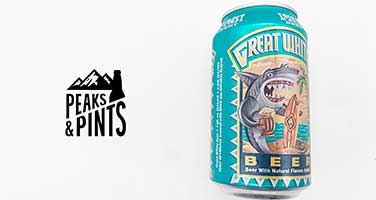 Peaks and Pints Beer Flight: Witbier
Peaks and Pints Beer Flight: Witbier
Lost Coast Great White
4.8% ABV
Lost Coast Brewery’s version of the Belgian style witbier, Great white is an unfiltered wheat beer with a translucent golden color. This light ale is easy on the taste buds but rich with a fruity and spiced twist. The citrus isn’t too heavy, but it does contain a decent amount of acid, giving it an orange flavor. The remaining flavor is a hint of citrus, coriander, and a secret blend of herbs.
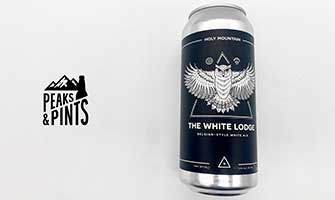 Holy Mountain The White Lodge
Holy Mountain The White Lodge
4.8% ABV
The Belgian wit (white) beer is a style that dates back more than 400 years. Holy Mountain’s version, The White Lodge, is brewed with a large portion of wheat along with pilsner malt and oats. The Seattle brewery uses coriander and orange peel in the kettle, lending a blend of citrus and floral characters, and ferment with a traditional Belgian strain. It’s smooth and dry, with coriander upfront, a little citrus and toasted biscuity malt, with a lightly spicy finish.
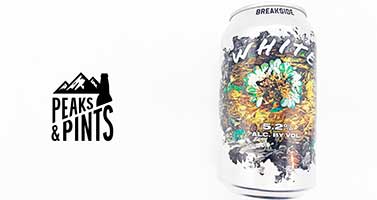 Breakside White
Breakside White
5.2% ABV
A recent addition to Breakside Brewery’s year-round offerings, White is a modern witbier brewed with light touches of spices and a restrained-but-characterful yeast. Everything here is subtle: subtle notes of floral coriander, subtle citrus from the use of bitter orange and sweet tangerine, subtle herbaceous and spicy hop notes, subtle wheatiness that provides a soft and pillowy mouthfeel, subtle notes of lemon, pear, and pepper from the yeast.
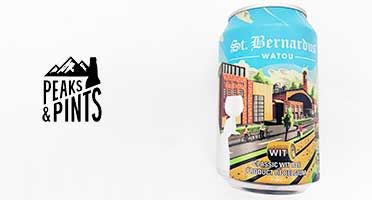 St. Bernardus Wit
St. Bernardus Wit
5.5% ABV
St. Bernardus Wit is a traditional Belgian white beer developed and brewed in collaboration with the legendary Master Brewer Pierre Celis, the Godfather of Hoegaarden and Celis White. A witbier or Belgian wit (white) beer is commonly made with pale barley and unmalted wheat, sometime oats, and in the case of St. Bernardus Wit, a second fermentation in the bottle. This wheat beer is famed for its zesty tastes of coriander and orange, with background touches of spicy cloves, fragrant with fruit and citrus. These zingy herbs combine with the creaminess of the wheat to produce a beer that is well balanced. The mild mouth feel produces a lovely interaction between the sweet malty taste and the refreshing touches of acid to produce a feeling of freshness overall.
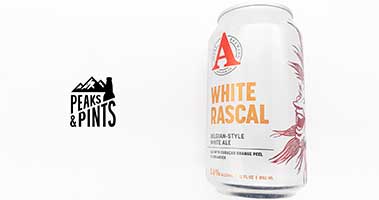 Avery White Rascal
Avery White Rascal
5.6% ABV
As Avery Brewing’s flagship beer and Gold medal winner in the Belgian Witbier category at the World Beer Cup 2023, White Rascal is a tribute to the history and time-honored tradition of the Belgian witbier. Avery uses authentic Belgian yeast and real Curaçao orange peel and coriander, akin to what was used by 15th-century brewers from the village of Hoegaarden. Citrus and spice are prevalent in the taste of this witbier, but here, the barley also adds to the complexity. Amid all of this you’ll notice a very thick body, making this wit the most filling one that we have tried.
LINK: Peaks & Pints cooler inventory
